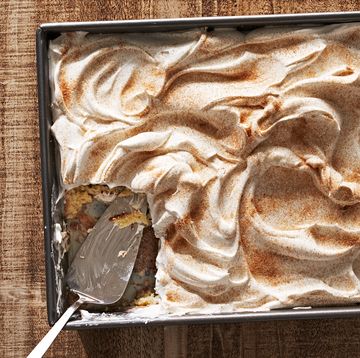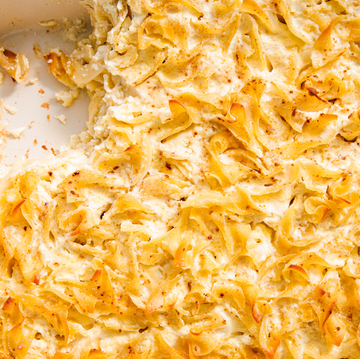Baking a loaf of sourdough bread is pure therapy: food for the body and food for the soul. Not only will it fill your kitchen with delish smells of yeasty goodness, you’ll walk away with a handful of life lessons along with a piece of unbelievably fulfilling bread. If you have time, making sourdough bread is the project for you. Just be careful—you might never be able to settle for store-bought loaves again.
Lesson #1: Enjoy the journey and reaching the destination will be that much sweeter.
The road to sourdough bread will be filled with a bit of uncertainty: everything from ambient temperature to the quality of flours to the strength of your touch will affect the end product. Don’t worry, it will be okay in the end. Enjoy the process, be kind to yourself, and trust in the power of wild yeasts and time.
If your first loaf isn't picture perfect or exactly what you had imagined in the beginning, don't let that discourage you! The first four loaves will be experiential learning experiences and each loaf will teach you something different—be open to absorbing the details and observing the effects of little variations in ambient temperature, technique, and time elapsed. Just like anything else, breadmaking is a skill gained gradually through repeated practice: less-than-ideal results are lessons along the way, not failures!
Lesson #2: Good things take time.
Yup. You’re reading those numbers right. This poster child of the slow food movement will take two days to make, and that’s not counting the week you’ll put into making that sourdough starter. But with time comes flavor. When you're ready to make your first loaf, first make sure that your starter passes the float test: take a 1/2 teaspoon of your starter and place it gently into a small bowl of water. A ripe starter that's good to use in your dough will float on top of the water—if it sinks, it's either not quite active enough just yet or past its prime. It's important to learn the rise and falls of your starter better by observing the patterns of its activity: how long after feeding does it take to rise to its peak, and how long before it starts to deflate? Time the making of your dough with the peaking of your starter for maximum leavening power.
When making the dough, a longer autolyse period will hydrate the flours better and result in a dough that’s much more pliable and flavorful. Let the water and flours rest for at least 1 full hour before incorporating salt and starter, up to 3 hours. A longer bulk fermentation after the incorporation of salt and water will allow for that classic sourdough tang to shine through. Time = flavor.
Lesson #3: Don't force it.
Be firm, but gentle. With every step in this recipe, you are attempting to build air into the dough while strengthening the gluten. This is why we don't knead the bread in the later parts of the bulk fermentation. Once the starter and salt is fully worked into the dough, the goal is to gradually build structure and strength into the gluten networks by a series of stretch and folds. While you don’t have to baby the dough, being too rough with it might result in tears that'll destroy the structure you’ve created with each stretch and fold. As gluten develops, the dough will hold more tension and feel more elastic and less wet: if it ever feels too tight to complete another fold, let it rest a little while longer and avoid forcing it. Patience is key.
Lesson #4: Looks aren’t everything.
Maybe you slacked on building tension during shaping, or the dough stuck to the basket when you flipped it out, or your razor snagged on the dough as you tried to score a pretty pattern. Maybe you don't have a dutch oven to bake in and there wasn't enough steam in the baking environment to help optimize oven spring. The loaf is a bit flat, the crust is a bit dull, the crumb not as open and "holey" as you had pictured. Not every loaf will be the most beautiful, but it will be darn delicious with some butter and salt—and now you’ve learned what to do differently when you make your next bread baby. Each bake will teach you something new about the breadmaking process, so be open to making mistakes and welcome the learning opportunities!
Lesson #5: Learn the rules in order to break them.
At first glance, this might seem like an overwhelmingly detailed recipe, down to the last gram of flour. But have fun with it! With practice, you will find enough confidence to play outside these boundaries. Let the dough autolyse a little longer. Work a little more water into if you want test a higher hydration loaf, or reduce the water for a sturdier lower-hydration loaf. Try fewer or more stretch and folds. Some bakers love to add in nuts and seeds—start with no more than 1/4 cup of add-ins, folded into the mix during the second half of your bulk fermentation. Each will give you a slight variation in your bread. There is really no good or bad here: it's all just playing with flour and water and time and seeing how they work together to produce a beautiful loaf of homemade sourdough bread.
Try using different flours: bread flour and whole wheat flour will give you the most structure and a classic taste. Rye flour will add a little more earthy acidity to the mix and will result in a looser dough that won't hold shape as well. Spelt flour will add mild sweet notes without the intensely nutty, borderline bitterness of whole wheat—but again, it will result in a looser dough. If you can't find bread flour and can only get your hands on all-purpose flour, add in 1/4 cup more all-purpose flour and go by feel—because all-purpose flour has lower protein content, its gluten networks will be weaker than those of bread flour. Don't be too concerned if your loaf can't seem to develop as much tension in the final shape: go with the flow, bake it, and see what happens! If you don't love the results, try something a little different next time until you land on the perfect loaf for you.
This recipe calls for an overnight cold proof to help the loaf develop more flavor while slowing down the dough activity and the proofing process. If you'd prefer faster result, proof the bread at room temperature for 2 to 3 hours—or until increases about 30% in size, dependent on your ambient room temperature—and bake the same day.
Bonus lesson: Baking is much easier when you use a scale!
You’ll never look back after using a scale for your next baking project. No more spooning and leveling flours, no more washing dirty measuring cups and spoons, and no more losing track of how many cups of flour just went into the mixing bowl. A good food scale will help you get more accurate results with precise measurements, and clean-up will be that much faster—and who can say no to that? A scale for baking is especially helpful if you plan on experimenting with different flours and hydration levels in your bread: jot down notes of what you did each time for a more scientific approach and work towards creating a formula for your ideal bread.
If you love bread of all kinds, we have a whole gallery dedicated to bread recipes! Leave us a note, comment, and rating down below and let us know how this recipe worked out for you!














